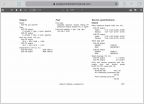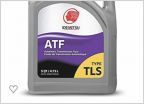-
Welcome to Tundras.com!
You are currently viewing as a guest! To get full-access, you need to register for a FREE account.
As a registered member, you’ll be able to:- Participate in all Tundra discussion topics
- Transfer over your build thread from a different forum to this one
- Communicate privately with other Tundra owners from around the world
- Post your own photos in our Members Gallery
- Access all special features of the site
Preforming Compression Test, what should I know?
Discussion in '1st Gen Tundras (2000-2006)' started by StrawberryBlowpopPrincess, Mar 19, 2025.


 Which plugs?
Which plugs? New Speaker Questions
New Speaker Questions Transmission fluid
Transmission fluid 2006 Tundra Double Cab - need USB ports
2006 Tundra Double Cab - need USB ports NEED HELP FINDING HEADLIGHTS!!
NEED HELP FINDING HEADLIGHTS!! A few questions. Diff seal replacement with CV's? UBJ assembly vs Front UBJ assembly?
A few questions. Diff seal replacement with CV's? UBJ assembly vs Front UBJ assembly?














































































